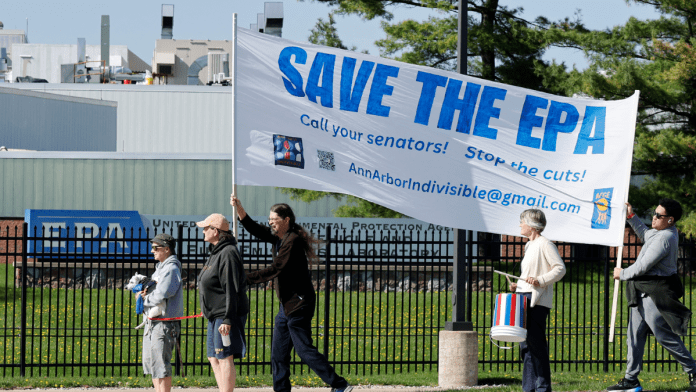🕒 Last updated on July 23, 2025
In a surprising move, the Environmental Protection Agency (EPA) has prepared a plan that could remove its own power to fight climate change. This plan focuses on getting rid of an important rule from 2009 called the “endangerment finding.”
EPA Plans to Cancel Key Climate Rule
The endangerment finding is the scientific reason the U.S. government can limit dangerous pollution caused by greenhouse gases. These gases—like carbon dioxide and methane—come from burning fossil fuels such as coal, oil, and gas. They trap heat in the Earth’s atmosphere, which causes the planet to get hotter over time. This warming leads to severe weather, wildfires, rising sea levels, and health problems for people.
If the EPA removes this rule, the government would lose its most powerful tool to limit pollution from cars, power plants, and factories. These are some of the biggest sources of greenhouse gases in the U.S.
Sources say the draft plan does not try to deny that climate change is real. Instead, it argues that the EPA went too far when it used the endangerment finding to create broad rules for pollution. The new plan claims the EPA should only act in more specific cases, not across all industries.
This rule change has not yet been made official. It still needs to go through several steps. First, it must be approved by the White House. Then, the public will have a chance to comment on it. If it is finalized, it could come into effect later this year.
Vehicle Pollution Limits Also Under Attack
Another part of the draft plan targets pollution rules for cars and trucks. These rules were designed to encourage car companies to make and sell more electric vehicles. Electric cars don’t release harmful greenhouse gases like gasoline-powered ones do. The Biden administration made these rules to help reduce pollution from the transportation sector, which is the biggest source of greenhouse gases in the country.
But the new EPA plan says that these rules could hurt people by making cars more expensive and giving them fewer choices. This argument turns the original reason for the rules on its head. Instead of focusing on health risks from pollution, it focuses on possible financial costs for consumers.
The removal of the endangerment finding would prevent the EPA from enforcing these clean car regulations. It would also be much harder for any future president to bring them back.
Experts believe that this change would have major long-term effects. It could erase many current limits on greenhouse gas pollution. It could also stop future efforts to slow global warming.
Legal Battles and Historical Context
This draft proposal goes against a major court decision made in 2007. In that case, the U.S. Supreme Court ruled that greenhouse gases are pollutants under the Clean Air Act. This decision forced the EPA to take action to protect people from the dangers of climate change.
Two years later, in 2009, the EPA responded by creating the endangerment finding. This finding said that six major greenhouse gases were putting public health at risk. The agency used hundreds of pages of scientific evidence to show that climate change leads to more deadly heat waves, stronger storms, droughts, and disease.
📜 Trump calls DOJ report a ‘Democrat hoax’, demands Epstein grand jury secrets be unsealed
Since then, the endangerment finding has been the legal basis for all federal efforts to limit greenhouse gas emissions. If it is canceled, it could take years—if not decades—to build back these protections.
The Trump administration has already rolled back many climate-related policies. It has supported the increased use of fossil fuels and made it harder for clean energy and electric vehicles to grow. This new move is one of the most serious because it attacks the scientific foundation that allows the government to act on climate change at all.
Legal experts expect that this plan will be challenged in court if it becomes official. They say it could be very hard to defend because it ignores the Supreme Court’s earlier decision. The law currently supports the EPA’s duty to protect people from dangerous air pollution, including climate pollution.
The EPA has not shared the full details of the plan yet. However, officials confirmed that a draft was sent to the White House on June 30. After the plan is examined and approved by the EPA administrator, it will be made available for public comment.
For now, the future of climate protections in the U.S. remains uncertain. If this plan goes forward, it could become one of the most dramatic environmental policy shifts in American history.

